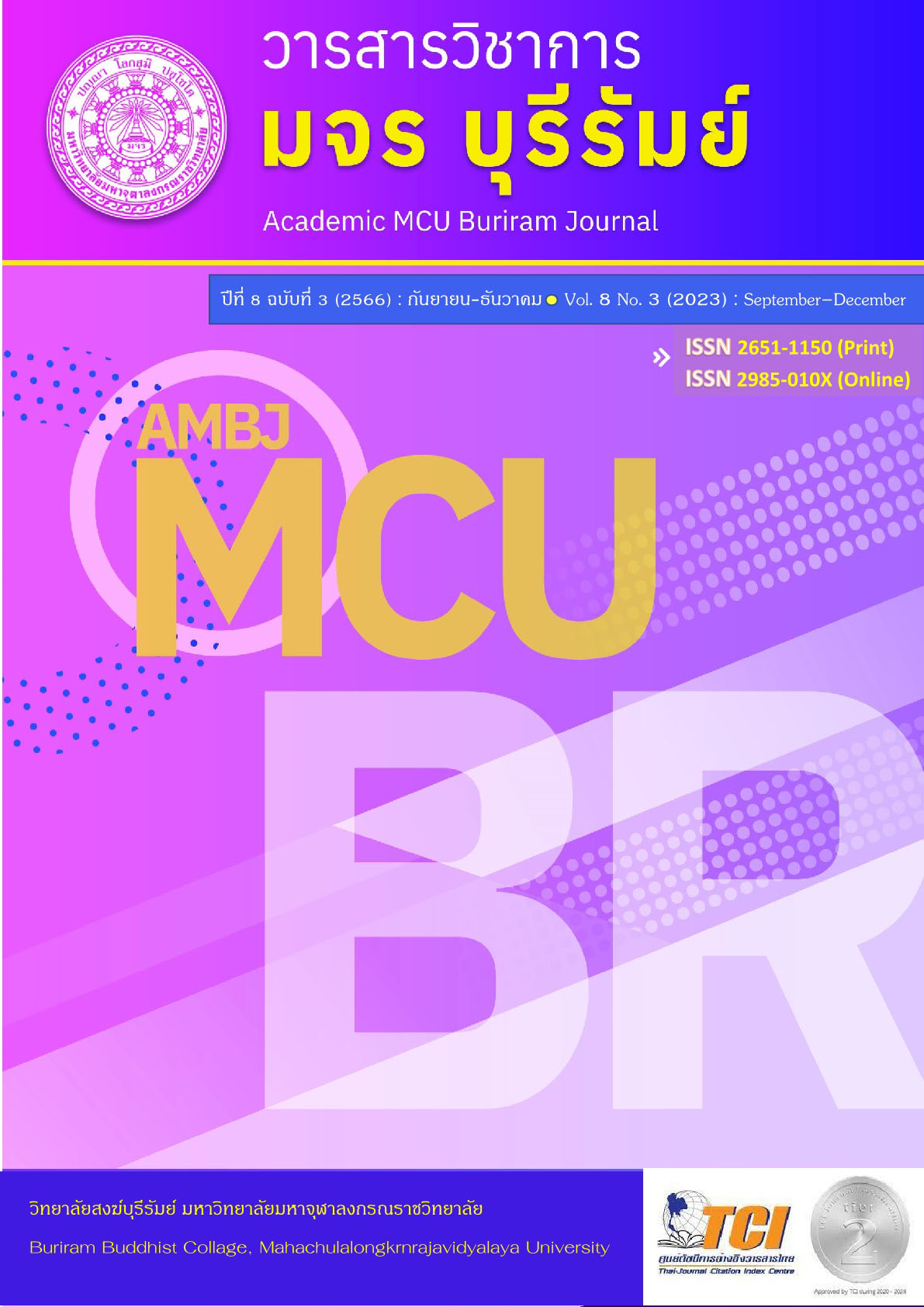Effect of Using PWIM Learning Management in Combination with Peer-Assisted Learning on the Ability to Read Chinese Vocabulary of Grade 7 Students
Keywords:
Picture Word Inductive Model, Peer-assisted Learning, The Ability to Read Words, SatisfactionAbstract
The purposes of this research were: 1) Comparison of reading proficiency in Chinese vocabulary of grade 7/2 students before and after learning using PWIM and peer learning management. 2) To study the satisfaction of grade 7/2 students who studied by using PWIM and peer learning management. The samples group consisted of 22 the grade 7/2 student’s at Thungmon Wittayakarn School. The research instruments included 1) Lesson plan to learning PWIM and peer learning management. 2) The evaluation from the reading word abilities. 3) Satisfaction to investigate the opinion of the grade 7/2 student’s taught by learning PWIM and learning management. The statistical data analysis were mean, standard deviation and t-test dependent sample.
The research results found that:
1. student’s learning achievement in the reading word abilities after taught by learning PWIM and learning management was higher than the one before using it with a level of significance at 0.05.
2. Satisfaction the opinion of grade 7/2 student’s taught by learning PWIM and learning management was at the high level. Especially the lessons have clear illustrations. beautiful and interesting the students liked that the teacher gave them matching pinyin spellings. And students have fun when reviewing vocabulary by playing games.
References
กระทรวงศึกษาธิการ. (2551). หลักสูตรแกนกลางการศึกษาขั้นพื้นฐาน 2551. กรุงเทพมหานคร: สกสค. ลาดพร้าว.
บุญชม ศรีสะอาด. (2554). การวิจัยเบื้องต้น. พิมพ์ครั้งที่ 10. กรุงเทพฯ: สุวีริยาสารส์น.
มหาวิทยาลัยสุโขทัยธรรมาธิราช. (2557). จีน : มหาอำนาจทางเศรษฐกิจในคริสต์ศตวรรษที่ 21, เข้าถึงได้จาก https://www.stou.ac.th/stouonline/lom/data/sec/Lom12/ 01-01-03.html (สืบค้นเมื่อ 16 มกราคม 2566).
กลุ่มบริหารวิชาการโรงเรียนทุ่งมนวิทยาคาร. (2564). รายงานสรุปผลการเรียนโรงเรียนทุ่งมนวิทยาคาร ปีการศึกษา 2564. สุรินทร์: โรงเรียนทุ่งมนวิทยาคาร.
วัชรา เล่าเรียนดี. (2556). รูปแบบและกลยุทธ์การจัดการเรียนรู้เพื่อพัฒนาทักษะการคิด. พิมพ์ครั้งที่ 10. นครปฐม: โรงพิมพ์มหาวิทยาลัยศิลปากร.
สุนิสา มามีสุข. (2564). การศึกษาผลสัมฤทธิ์ทางการเรียนคำศัพท์ภาษาอังกฤษโดยใช้การจัดการเรียนรู้แบบ Picture Word Inductive Model ของนักเรียนชั้นประถมศึกษาปีที่ 3. วารสารศึกษาศาสตร์ คณะศึกษาศาสตร์ มหาวิทยาลัยศิลปากร, 5(2), 20–23.
สง่า วงค์ไชย. (2562). Picture Word Inductive Model: รูปแบบการสอนอ่านและเขียนสำหรับเด็กไทย. Veridian E-Journal Silpakorn University, 12(2), 1120-1121.
สุริยะ หาญพิชัย. (2562). การพัฒนาผลสัมฤทธิ์ทางการเรียนในรายวิชาท้องถิ่นศึกษาโดยใช้
การเรียนรู้แบบลงมือทำ. Lawarath Social E-Journal, 1(3), 54.
สุพัตรา ศรีธรรมมา. (2562). การพัฒนาความสามารถในการอ่านและการเขียนสะกดคำของนักเรียนชั้นประถมศึกษาปีที่ 1 โดยการจัดการเรียนรู้แบบ PWIM ร่วมกับแผนผังความคิด. วิทยานิพนธ์ศึกษาศาสตรมหาบัณฑิต. บัณฑิตวิทยาลัย: มหาวิทยาลัยศิลปากร.
อิศเรศ พิพัฒน์มงคลพร และวิไล พิพัฒน์มงคลพร. (2558). การจัดกิจกรรมการเรียนการสอนแบบพิคเจอร์เวิร์ด. วารสารศึกษาศาสตร์ คณะศึกษาศาสตร์ มหาวิทยาลัยศิลปากร, 13(1), 17.
Calhoun, E. (2017). Teaching Beginning Reading and Writing with the Picture WordInductive Model. Retrieved from https://books.google.co.th/books?id=mHBC95WB7TIC&dq=PWIM&hl=th&source=gbs_navlinks_s (Accessed 16 December 2022).
Miller, A.B., Barbetta, P.M. & Heron, T.E. (1994). General procedures of peer tutoring. Retrieved from http://www.ohiostage.edu/urbanintiative/peertutoring.theory.htm (Accessed 6 January 2023).
Wahyuni, E. F. (2016). The Picture Word Inductive Model and Improve Student’s Vocabulary Achievement at MTs ASSYAFI’IYAH GONDANG Vocabulary Acquisition. The faculty of the Graduate School: Wichita State University.
Downloads
Published
How to Cite
Issue
Section
License
Copyright (c) 2023 Academic MCU Buriram Journal

This work is licensed under a Creative Commons Attribution-NonCommercial-NoDerivatives 4.0 International License.
ทัศนะและความคิดเห็นที่ปรากฏในบทความวารสารฉบับนี้ถือเป็นความรับผิดชอบของผู้เขียนบทความนั้น ไม่ถือเป็นทัศนะและความรับผิดชอบของบรรณาธิการ





